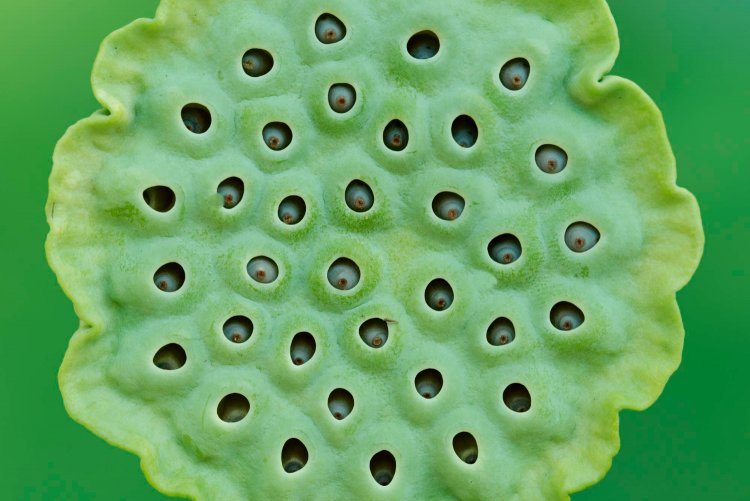Exploring Trypophobia: Understanding the Fear of Small Holes
Trypophobia is a fascinating yet perplexing psychological phenomenon that has gained increasing attention in recent years. Characterized by an intense aversion or fear of clustered small holes or bumps, trypophobia elicits strong emotional and physical reactions in those who experience it. Despite its prevalence, trypophobia is not officially recognized as a distinct mental disorder, leaving many unanswered questions about its nature and treatment.

The Nature of Trypophobia
Trypophobia derives its name from the Greek words "trypo," meaning holes, and "phobia," meaning fear. While not listed as a specific phobia in diagnostic manuals such as the DSM-5, trypophobia has garnered widespread recognition due to the proliferation of online communities and media coverage discussing this phenomenon.
Symptoms and Manifestations
Individuals with trypophobia may exhibit a range of symptoms when exposed to triggering stimuli, including:
- Intense fear or disgust: Many report experiencing overwhelming feelings of fear, disgust, or revulsion when confronted with images or objects containing clusters of small holes or bumps.
- Physical reactions: These may include sensations such as itching, tingling, or crawling skin, nausea, sweating, increased heart rate, or trembling.
- Avoidance behaviors: People with trypophobia may actively avoid situations, objects, or images that evoke their symptoms, leading to disruptions in daily life or social interactions.
Common Triggers
Trypophobia triggers can vary widely among individuals but often include:
- Lotus seed pods: The characteristic arrangement of holes in lotus seed pods is a frequently cited trigger for trypophobia.
- Honeycomb: The repetitive pattern of hexagonal cells in honeycomb structures can elicit strong aversive reactions.
- Coral: The porous texture of coral reefs and the irregular arrangement of their holes may provoke discomfort in some individuals.
- Sponges: The numerous pores and uneven surface of natural and synthetic sponges can trigger trypophobia.
- Bubble clusters: Patterns created by clusters of bubbles or foam, such as those found in certain liquids or foams, may evoke trypophobic responses.
- Pores on the skin: Close-up images of pores on human skin, particularly when enlarged or exaggerated, can trigger aversive reactions.
Theories on Causes
The underlying causes of trypophobia remain a subject of debate among researchers. Several theories have been proposed, including:
- Evolutionary origins: Some researchers suggest that trypophobia may have evolutionary roots, stemming from an innate aversion to patterns resembling skin lesions or toxic organisms. This theory posits that individuals with a heightened sensitivity to such patterns would have been more likely to avoid potential sources of harm in ancestral environments.
- Learned response: Others argue that trypophobia may develop through associative learning, whereby individuals acquire a fear response to specific stimuli after experiencing negative or traumatic events associated with them.
- Sensory processing differences: Certain studies suggest that individuals with trypophobia may exhibit atypical sensory processing, leading to heightened sensitivity to visual stimuli and increased emotional reactivity.
Coping Strategies and Treatment Approaches
While no specific treatments have been developed specifically for trypophobia, individuals experiencing significant distress or impairment may benefit from various therapeutic interventions, including:
- Cognitive-behavioral therapy (CBT): CBT techniques can help individuals identify and challenge negative thought patterns and behaviors associated with trypophobia.
- Exposure therapy: Gradual exposure to triggering stimuli in a controlled and supportive environment can help desensitize individuals to their fears over time.
- Mindfulness-based approaches: Practices such as mindfulness meditation, deep breathing exercises, and progressive muscle relaxation can help individuals manage anxiety and discomfort associated with trypophobia.
In conclusion, Trypophobia represents a unique and intriguing area of study within the field of psychology, yet much remains to be understood about its origins, mechanisms, and treatment. As awareness of trypophobia continues to grow, further research is needed to unravel the complexities of this phenomenon and develop effective strategies for supporting individuals living with this condition.
Disclaimer
The information provided in this article is for educational purposes only and should not be considered medical advice. If you have any health concerns or are experiencing symptoms, it is important to consult with a healthcare professional, such as a doctor or clinic, for proper diagnosis and treatment. Always seek the advice of your doctor or other qualified health provider with any questions you may have regarding a medical condition. Do not disregard professional medical advice or delay in seeking it because of something you have read in this article.
Hashtags
#Trypophobia #MentalHealth #Phobias #CognitiveBehavioralTherapy #Mindfulness #ExposureTherapy #HealthAwareness #Psychology #FearOfHoles #Wellness
What's Your Reaction?





















